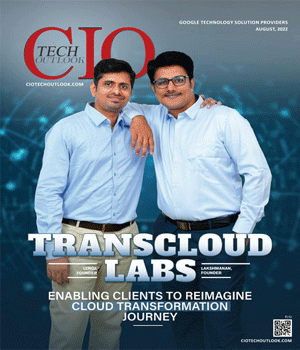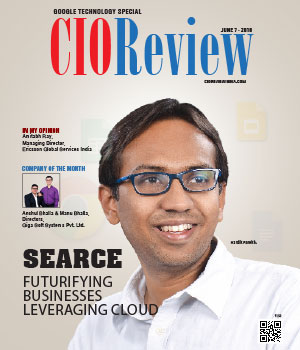
CIOs can Restore their Business Voice through Five Simple Steps
Rajesh Ramnani, Regional Director, VCE
 Every business is now a technology business. It doesn’t matter what you do or how you do it, the chances are you couldn’t do it without IT. The problem is that a gap between IT and business professionals is emerging when it comes to the perception of IT, and the more technology becomes embedded across the business, the more traditional IT is at risk of being marginalized.
Every business is now a technology business. It doesn’t matter what you do or how you do it, the chances are you couldn’t do it without IT. The problem is that a gap between IT and business professionals is emerging when it comes to the perception of IT, and the more technology becomes embedded across the business, the more traditional IT is at risk of being marginalized.
In this article, we will look at a significant piece of new research commissioned by EMC that casts new light on the challenges and pressures on IT teams, and CIOs in particular.
The impact of disruptive digital technologies
As technology becomes more embedded across the business, the marginalization of IT within organizations is a danger which many business leaders are aware of. CIOs are faced with the challenge of deciding how to position traditional IT in relation to emerging innovative business technologies.
Back in 2014, a report by Gartner found that CIOs may hesitate to make digital business technologies part of IT's responsibilities. This is mainly because they are operations-focused and digital technologies are emerging in nature: the IT teams have been used to owning and supporting back office and infrastructure technologies, which is not always the best fit for emerging digital technologies.
Gartner concluded that “Regardless of the eventual stance, we believe CIOs should have an opinion, and should participate in innovating and in testing the business cases for these technologies in the early stages. Many companies are looking to digital business technologies as their next source of competitive advantage. There is too much at stake- in both business value and technology investment- for CIOs to stay in the margins.”
So what needs to happen, to avoid the marginalization of IT?
EMC’s Converged Platforms Division set out to better understand what needs to happen for IT to reclaim technology. EMC spoke to C-suite and frontline employees in both IT and business roles in companies with 50 to 1,000 or more employees, representing different sectors in 13 countries around the world. EMC surveyed over 2,700 businesses and IT professionals in Europe, the Middle East and Africa, and the findings reveal significant challenges for IT teams, regardless of company size, sector or geography.
The study found that many CIOs doubt the ability of their IT infrastructure and professionals to meet long-term needs as technology becomes embedded across the business. CIOs feel they lack control of IT decisions but the findings also reveal five areas where they can fight back and show relevance by leading change and demonstrating leadership. These are explored below.
1. Refocus IT’s time and expertise away from ‘keeping the lights on’
The EMC research paints a picture of the CIO in danger of becoming increasingly isolated and under-pressure; coping with the challenges of steadily rising expectations for IT, interference from colleagues in other roles and a lack of common ground with the rest of the C-suite.
Two-thirds of CIOs, compared to just over half of business CXOs, think their IT professionals work in isolation from the rest of the business and often also from each other.
Moving away from a ‘keeping the lights on’ approach, towards a more self-sufficient IT infrastructure, can make it possible for IT teams to once again showcase their knowledge and become a driving force within business.
2. Be ready and willing to respond to change
The study reveals that three quarters of CIOs say that five years from now they will need to be able to launch new products, services and applications in half the time it takes them today, but most (69 percent) are concerned that business growth will quickly reveal weaknesses in existing IT.
There is a need for IT to be able to adapt and scale more rapidly than ever before, and to accommodate more IT decision-makers across the boardroom. Intelligent infrastructure will be the key to accommodating this, providing IT professionals with a foundation from which they can support the rest of the business as it grows.
3. Give IT the confidence to sit in the driving seat
In 39 percent of the companies surveyed, the IT agenda is set by functions other than IT and business, for example marketing (11 percent) and sales (10 percent). This disconnect is seen in the boardroom, with 58 percent of CIOs convinced they have overall control over IT, while just 14 percent of business CXOs agree with them.
Furthermore, CIOs and CXOs each believe that they are the greatest driver of change (37 percent and 40 percent) and that all other roles are resistant to change. There are power struggles within the business that need to be addressed if IT is to reclaim technology leadership.
4. Make the IT function flexible, by supporting it with the right infrastructure
But if IT is to navigate these power struggles and reclaim technology leadership, it needs to be able to accommodate change. To survive and thrive in a connected future, the business, therefore, needs to move from a traditional IT infrastructure to an integrated environment, which turns growing complexity into software-based simplicity.
Perhaps it’s no surprise then, that over 80 percent of all business leaders agree that a scalable, flexible IT infrastructure will reduce risk by providing a solid foundation for business growth and innovation.
5. Nurture a flexible, commercially aware culture within IT
The IT functions as a whole needs to adapt, professionally and culturally, to the concept of IT infrastructure as an advanced, on-demand utility it can use rather than manage. The time saved not having to keep the operational lights on will release IT professionals to share their expertise across the business. This, in turn, will reduce the risk of the marginalization of IT as a whole.
Investing in more flexible IT and powerful infrastructures, such as modernized converged data centers, will deliver the high performance, speed and agility businesses need. Change is rarely easy, but managed, technology-supported change that makes everyone’s working lives smoother, will make the journey significantly more comfortable. By addressing this, and the five points above, IT will be in a position to reclaim its voice in business.
CIO Viewpoint
Why Foolproof Facial Recognition Is Key Against...
By Joseph Sudheer Thumma, Global CEO & MD, Magellanic Cloud
National Technology Day 2025: Powering Progress...
By CIOTech Outlook Team
Aligning IT Roadmap with Business Objectives: A...
By Subhash singh Punjabi, CISO & Head Enterprise Architecture, Deepak Fertilisers & Petrochemicals Corporation Ltd
CXO Insights
Cloud Computing: Newer Models To Mitigate Risks
By Sumed Marwaha, Regional Services Vice President and MD, Unisys India
How Right Tools Create Easy Consumer...
By Ganesh Lakshminarayanan, COO, Capillary Technologies
Cloud Data Services Sparking Change In The...




.jpg)




